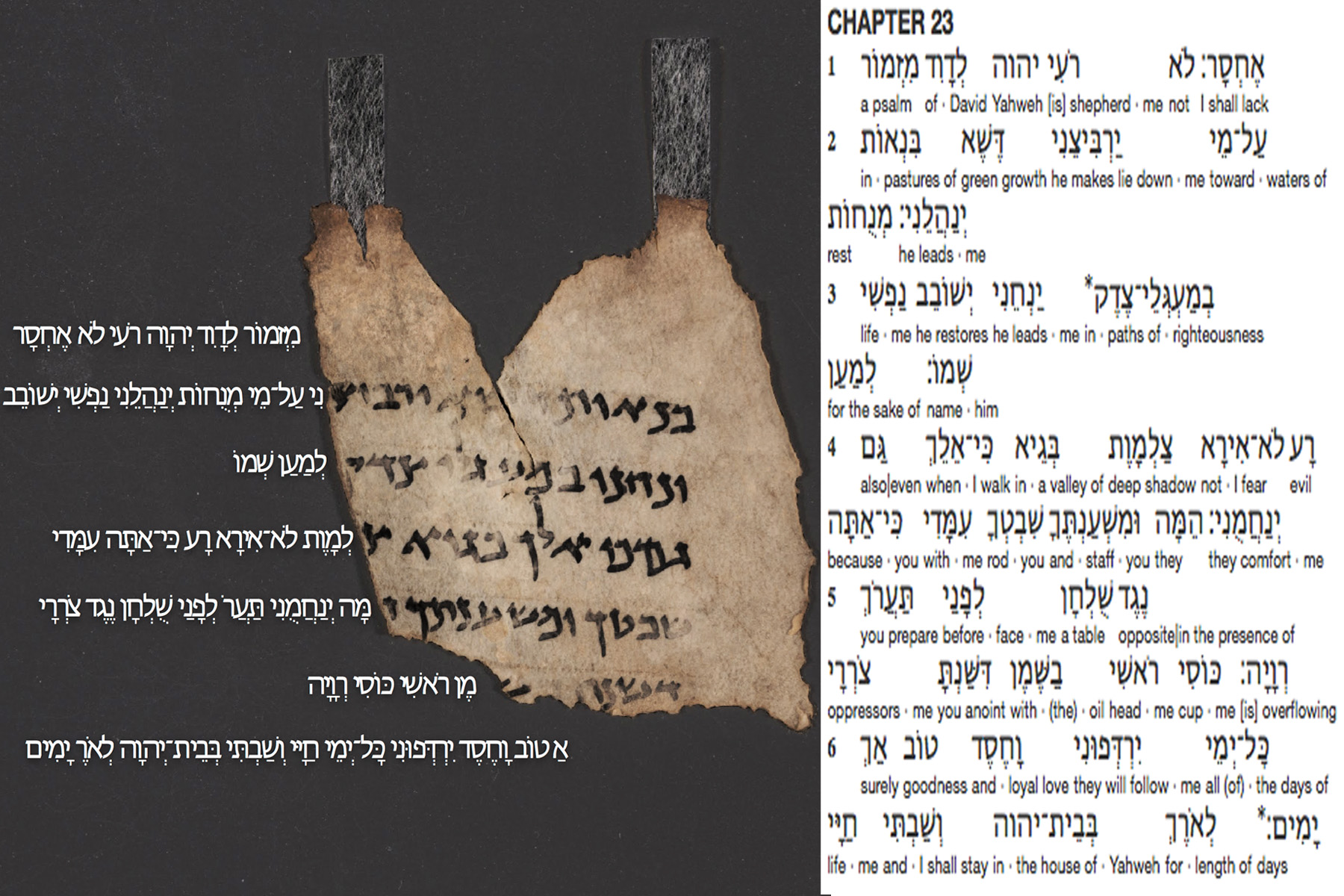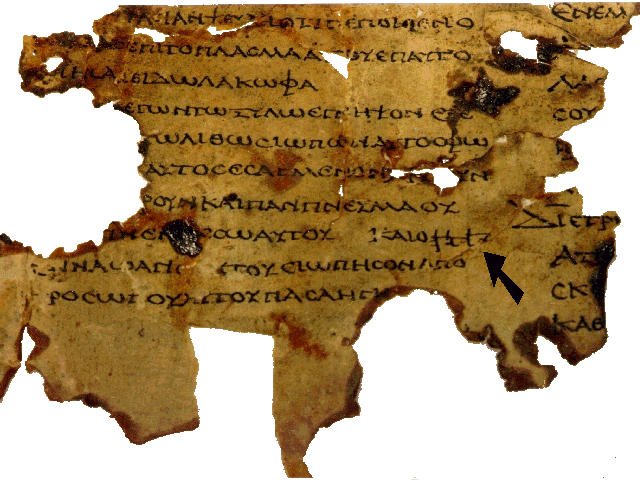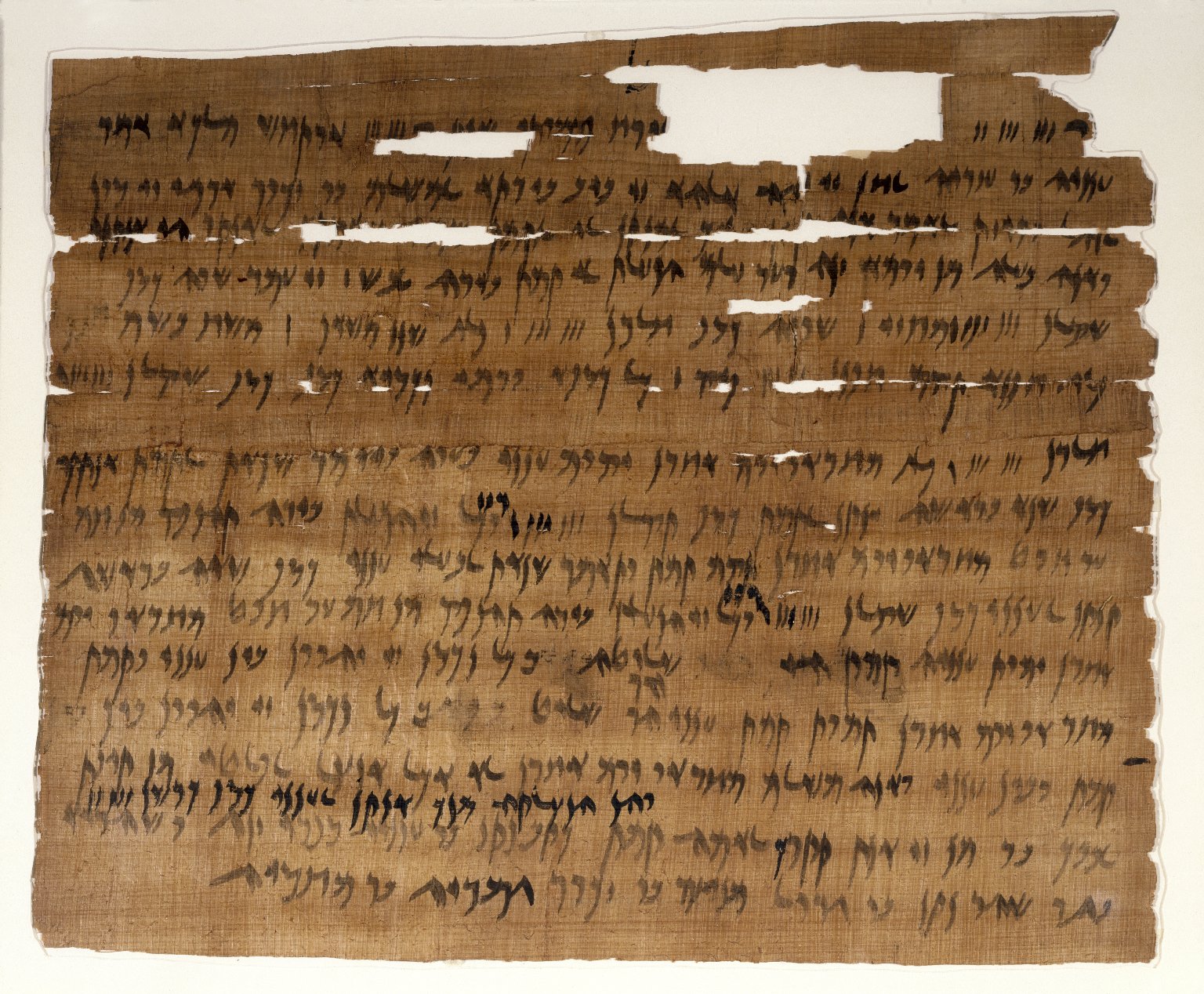|
Nahal Hever
Nahal Hever ( he, נחל חבר) or Wadi al-Khabat (Arabic) is an intermittent stream (wadi) in the Judean Desert, that flows through the West Bank and Israel, from the area of Yatta to the Dead Sea. The Hebrew name is derived from "Hevron", the Hebrew name of the city of Hebron. The stream has a few waterfalls, the tallest one having a drop of over . The caves At the head of the stream are two caves, the "Cave of Letters" (מערת האיגרות), and, further up, the "Cave of Horror" (מערת האימה) in which twenty four human skeletons were found. The skeletons of Babatha, whose personal documents were famously discovered in the Cave of Letters, and of her son are, presumably, among them. The findings have been regarded as archaeological evidence of the Bar Kokhba revolt (132–136). The sites were discovered in 1953 and investigated in 1960 and 1961 by Yigael Yadin. In 1999 and 2000 it was excavated by Richard Freund of the University of Hartford. Biblical manuscripts ... [...More Info...] [...Related Items...] OR: [Wikipedia] [Google] [Baidu] |
Greek Minor Prophets Scroll From Nahal Hever
The Greek Minor Prophets Scroll from Nahal Hever (8HevXII gr) is a Greek manuscript of a revision of the Septuagint dated to the 1st century CE. The manuscript is kept in the Rockefeller Museum in Jerusalem. It was first published by Dominique Barthélemy in 1963. The Rahlfs-Siglum is 943. Discovery and history In the 1st century CE, the 8HevXII gr with several documents was taken by Jewish fugitives (Bar Kokhba's troops, women and children) who were taking refuge in the Caves of Nahal Hever. After accepting their death, unable to leave because of the presence of Roman camps outside the caves, who besieged the inmates as a military camp located above the cave shows, the refugees decided to make a large bonfire and burn all their belongings, but buried the Greek Minor Prophets Scroll and other important documents between the rocks of the end chamber. Inside the caves, a burnt layer was found which suggests that the last inhabitants of the cave had burned all their possessions. The ... [...More Info...] [...Related Items...] OR: [Wikipedia] [Google] [Baidu] |
Psalms
The Book of Psalms ( or ; he, תְּהִלִּים, , lit. "praises"), also known as the Psalms, or the Psalter, is the first book of the ("Writings"), the third section of the Tanakh, and a book of the Old Testament. The title is derived from the Greek translation, (), meaning "instrumental music" and, by extension, "the words accompanying the music". The book is an anthology of individual Hebrew religious hymns, with 150 in the Jewish and Western Christian tradition and more in the Eastern Christian churches. Many are linked to the name of David, but modern mainstream scholarship rejects his authorship, instead attributing the composition of the psalms to various authors writing between the 9th and 5th centuries BC. In the Quran, the Arabic word ‘Zabur’ is used for the Psalms of David in the Hebrew Bible. Structure Benedictions The Book of Psalms is divided into five sections, each closing with a doxology (i.e., a benediction). These divisions were probably intro ... [...More Info...] [...Related Items...] OR: [Wikipedia] [Google] [Baidu] |
Rivers Of Israel
A river is a natural flowing watercourse, usually freshwater, flowing towards an ocean, sea, lake or another river. In some cases, a river flows into the ground and becomes dry at the end of its course without reaching another body of water. Small rivers can be referred to using names such as creek, brook, rivulet, and rill. There are no official definitions for the generic term river as applied to geographic features, although in some countries or communities a stream is defined by its size. Many names for small rivers are specific to geographic location; examples are "run" in some parts of the United States, "burn" in Scotland and northeast England, and "beck" in northern England. Sometimes a river is defined as being larger than a creek, but not always: the language is vague. Rivers are part of the water cycle. Water generally collects in a river from precipitation through a drainage basin from surface runoff and other sources such as groundwater recharge, spring ... [...More Info...] [...Related Items...] OR: [Wikipedia] [Google] [Baidu] |
Hebrew Papyri
Hebrew and Aramaic papyri have increasingly been discovered from the 1960s onwards, although these papyri remain rare compared to papyri written in Koine Greek and Demotic Egyptian (no relation except in name, "popular," to modern demotic Greek). The most valuable and religious texts were written on leather scrolls, parchment - such as the literary texts from Masada and Qumran, while papyrus was employed for cheaper, domestic use. A standard work is the ''Corpus Papyrorum Judaicarum'' of Victor Tcherikover and Alexander Fuks (Cambridge, Massachusetts Vol.I 1957, II 1960, III ed. Menahem Stern 1964) which is largely of Greek language papyri but includes examples of Hebrew and Aramaic papyri from Israel, Jordan, and Egypt. In Egypt In 1909 Joseph Offord remarks that Germany had acquired all the Hebrew papyri found in Upper Egypt the previous winter, but that many were still to be found. In 1966 the Bodleian Library possessed only four Hebrew and three Aramaic papyri. Qumran The ma ... [...More Info...] [...Related Items...] OR: [Wikipedia] [Google] [Baidu] |
Greek-language Papyri
Greek ( el, label=Modern Greek, Ελληνικά, Elliniká, ; grc, Ἑλληνική, Hellēnikḗ) is an independent branch of the Indo-European family of languages, native to Greece, Cyprus, southern Italy (Calabria and Salento), southern Albania, and other regions of the Balkans, the Black Sea coast, Asia Minor, and the Eastern Mediterranean. It has the longest documented history of any Indo-European language, spanning at least 3,400 years of written records. Its writing system is the Greek alphabet, which has been used for approximately 2,800 years; previously, Greek was recorded in writing systems such as Linear B and the Cypriot syllabary. The alphabet arose from the Phoenician script and was in turn the basis of the Latin, Cyrillic, Armenian, Coptic, Gothic, and many other writing systems. The Greek language holds a very important place in the history of the Western world. Beginning with the epics of Homer, ancient Greek literature includes many works of lasting importa ... [...More Info...] [...Related Items...] OR: [Wikipedia] [Google] [Baidu] |
Dead Sea Scrolls
The Dead Sea Scrolls (also the Qumran Caves Scrolls) are ancient Jewish and Hebrew religious manuscripts discovered between 1946 and 1956 at the Qumran Caves in what was then Mandatory Palestine, near Ein Feshkha in the West Bank, on the northern shore of the Dead Sea. Dating from the 3rd century BCE to the 1st century CE, the Dead Sea Scrolls are considered to be a keystone in the history of archaeology with great historical, religious, and linguistic significance because they include the oldest surviving manuscripts of entire books later included in the biblical canons, along with deuterocanonical and extra-biblical manuscripts which preserve evidence of the diversity of religious thought in late Second Temple Judaism. At the same time they cast new light on the emergence of Christianity and of Rabbinic Judaism. Most of the scrolls are held by Israel in the Shrine of the Book at the Israel Museum, but their ownership is disputed by Jordan due to the Qumran Caves' history: f ... [...More Info...] [...Related Items...] OR: [Wikipedia] [Google] [Baidu] |
Aramaic Papyri
Hebrew and Aramaic papyri have increasingly been discovered from the 1960s onwards, although these papyri remain rare compared to papyri written in Koine Greek and Demotic Egyptian (no relation except in name, "popular," to modern demotic Greek). The most valuable and religious texts were written on leather scrolls, parchment - such as the literary texts from Masada and Qumran, while papyrus was employed for cheaper, domestic use. A standard work is the ''Corpus Papyrorum Judaicarum'' of Victor Tcherikover and Alexander Fuks (Cambridge, Massachusetts Vol.I 1957, II 1960, III ed. Menahem Stern 1964) which is largely of Greek language papyri but includes examples of Hebrew and Aramaic papyri from Israel, Jordan, and Egypt. In Egypt In 1909 Joseph Offord remarks that Germany had acquired all the Hebrew papyri found in Upper Egypt the previous winter, but that many were still to be found. In 1966 the Bodleian Library possessed only four Hebrew and three Aramaic papyri. Qumran The ma ... [...More Info...] [...Related Items...] OR: [Wikipedia] [Google] [Baidu] |
Archaeological Sites In Israel
The archaeology of Israel is the study of the archaeology of the present-day Israel, stretching from prehistory through three millennia of documented history. The ancient Land of Israel was a geographical bridge between the political and cultural centers of Mesopotamia and Egypt. Despite the importance of the country to three major religions, serious archaeological research only began in the 15th century.''Encyclopedia of Zionism and Israel'', edited by Raphael Patai, Herzl Press and McGraw-Hill, New York, 1971, vol. I, pp. 66–71 Although he never travelled to the Levant, or even left the Netherlands, the first major work on the antiquities of Israel is considered to be Adriaan Reland's ''Antiquitates Sacrae veterum Hebraeorum,'' published in 1708. Edward Robinson (scholar), Edward Robinson, an American theologian who visited the country in 1838, published its first topographical studies. Lady Hester Stanhope performed the first modern excavation at Ashkelon in 1815. A Frenchm ... [...More Info...] [...Related Items...] OR: [Wikipedia] [Google] [Baidu] |
Israel Antiquities Authority
The Israel Antiquities Authority (IAA, he, רשות העתיקות ; ar, داﺌرة الآثار, before 1990, the Israel Department of Antiquities) is an independent Israeli governmental authority responsible for enforcing the 1978 Law of Antiquities. The IAA regulates excavation and conservation, and promotes research. The Director-General is Mr. Eli Escusido, and its offices are housed in the Rockefeller Museum. The Israel Antiquities Authority plans to move into a new building for the National Campus for the Archaeology of Israel in Jerusalem, next to the Israel Museum. History The Israel Department of Antiquities and Museums (IDAM) of the Ministry of Education was founded on July 26, 1948, after the establishment of the State of Israel. It took over the functions of the Department of Antiquities of the British Mandate in Israel and Palestine. Originally, its activities were based on the British Mandate Department of Antiquities ordinances. IDAM was the statutory aut ... [...More Info...] [...Related Items...] OR: [Wikipedia] [Google] [Baidu] |
Archaeology Of Israel
The archaeology of Israel is the study of the archaeology of the present-day Israel, stretching from prehistory through three millennia of documented history. The ancient Land of Israel was a geographical bridge between the political and cultural centers of Mesopotamia and Egypt. Despite the importance of the country to three major religions, serious archaeological research only began in the 15th century.''Encyclopedia of Zionism and Israel'', edited by Raphael Patai, Herzl Press and McGraw-Hill, New York, 1971, vol. I, pp. 66–71 Although he never travelled to the Levant, or even left the Netherlands, the first major work on the antiquities of Israel is considered to be Adriaan Reland's ''Antiquitates Sacrae veterum Hebraeorum,'' published in 1708. Edward Robinson, an American theologian who visited the country in 1838, published its first topographical studies. Lady Hester Stanhope performed the first modern excavation at Ashkelon in 1815. A Frenchman, Louis Felicien de Sau ... [...More Info...] [...Related Items...] OR: [Wikipedia] [Google] [Baidu] |
Deuteronomy
Deuteronomy ( grc, Δευτερονόμιον, Deuteronómion, second law) is the fifth and last book of the Torah (in Judaism), where it is called (Hebrew: hbo, , Dəḇārīm, hewords Moses.html"_;"title="f_Moses">f_Moseslabel=none)_and_the_fifth_book_of_the_Christian_Old_Testament.html" ;"title="Moses">f_Moses.html" ;"title="Moses.html" ;"title="f Moses">f Moses">Moses.html" ;"title="f Moses">f Moseslabel=none) and the fifth book of the Christian Old Testament">Moses">f_Moses.html" ;"title="Moses.html" ;"title="f Moses">f Moses">Moses.html" ;"title="f Moses">f Moseslabel=none) and the fifth book of the Christian Old Testament. Chapters 1–30 of the book consist of three sermons or speeches delivered to the Israelites by Moses on the Plains of Moab, shortly before they enter the Promised Land. The first sermon recounts the Moses#The years in the wilderness, forty years of wilderness wanderings which had led to that moment, and ends with an exhortation to observe the law. T ... [...More Info...] [...Related Items...] OR: [Wikipedia] [Google] [Baidu] |










